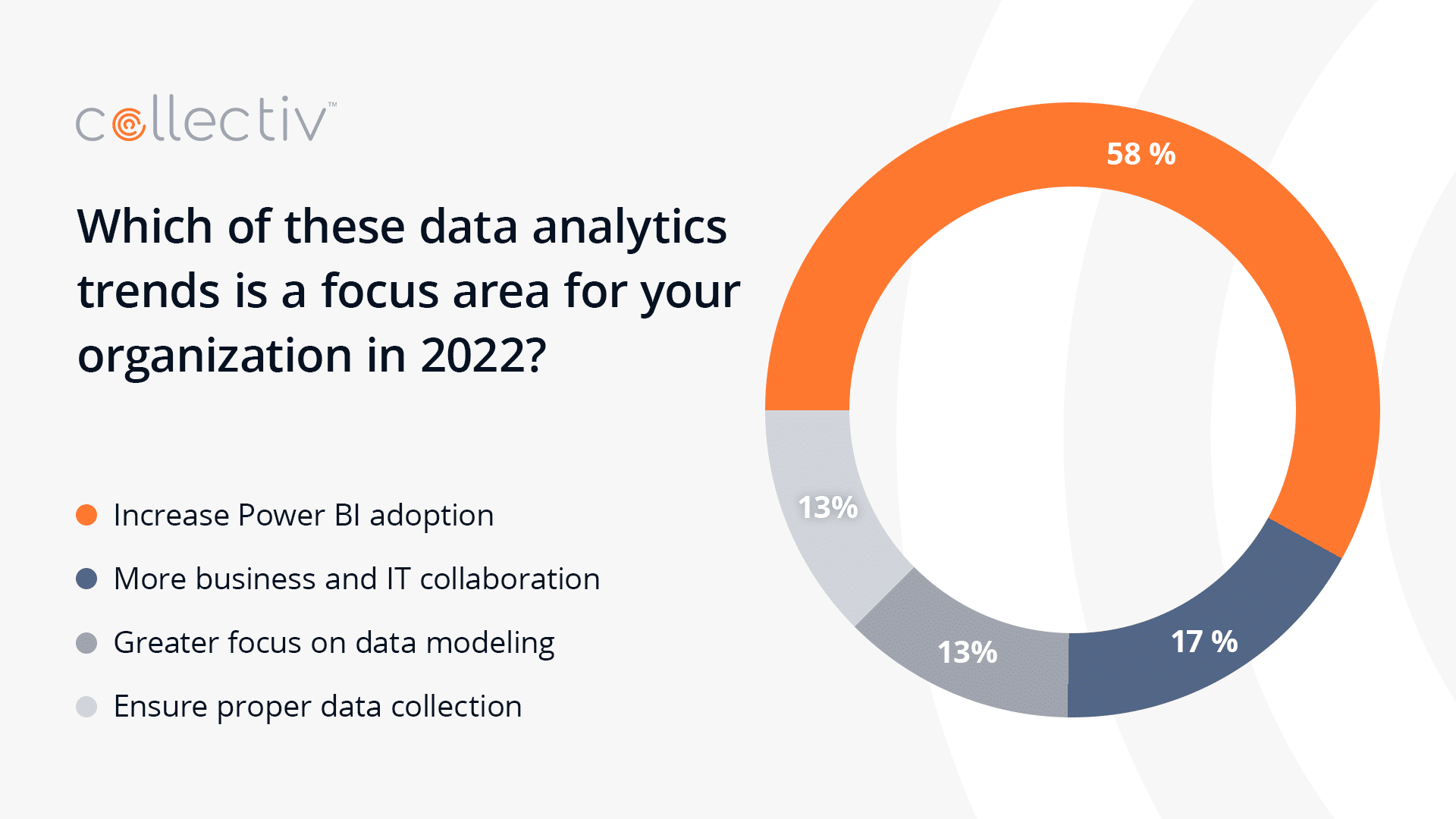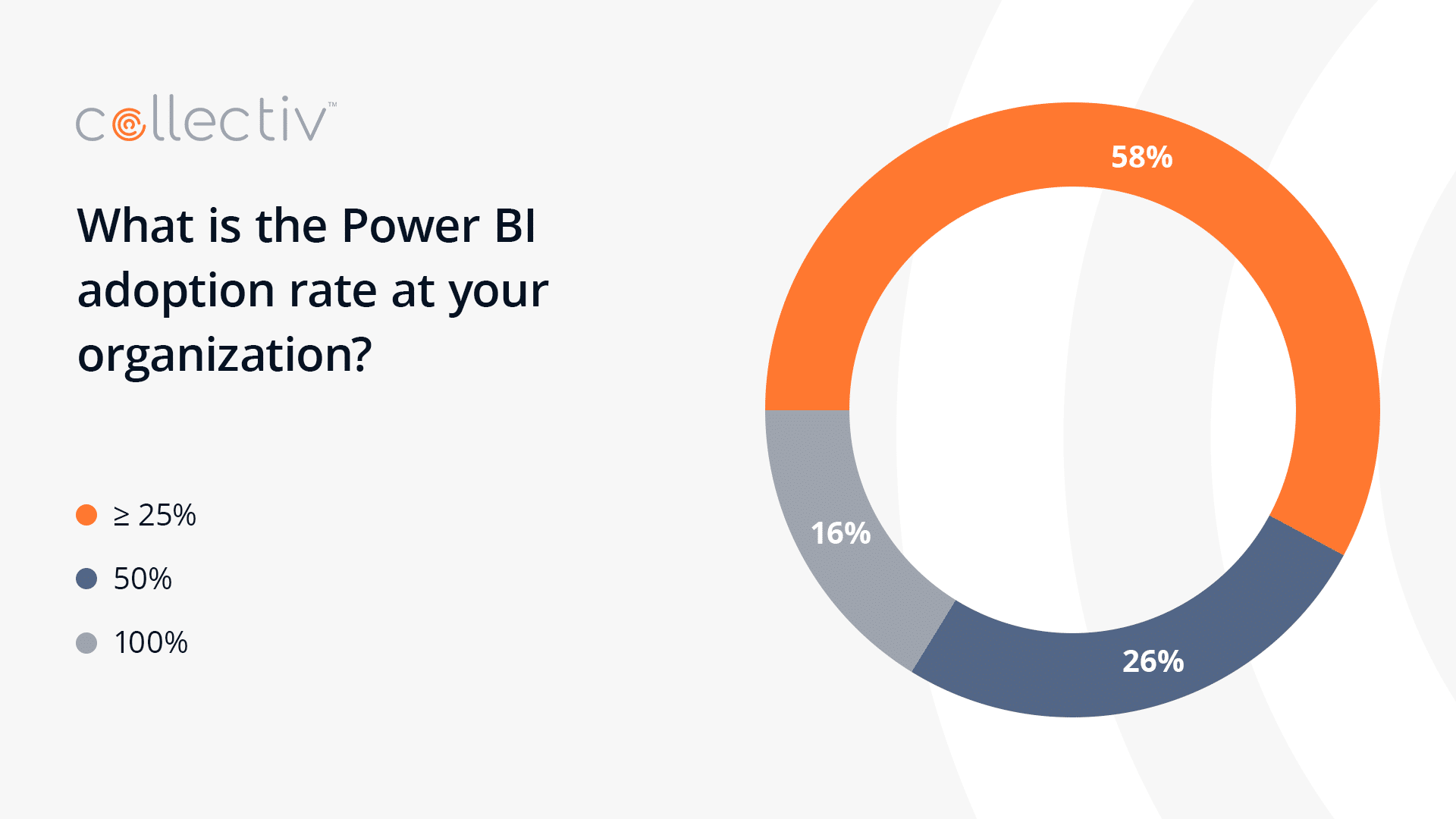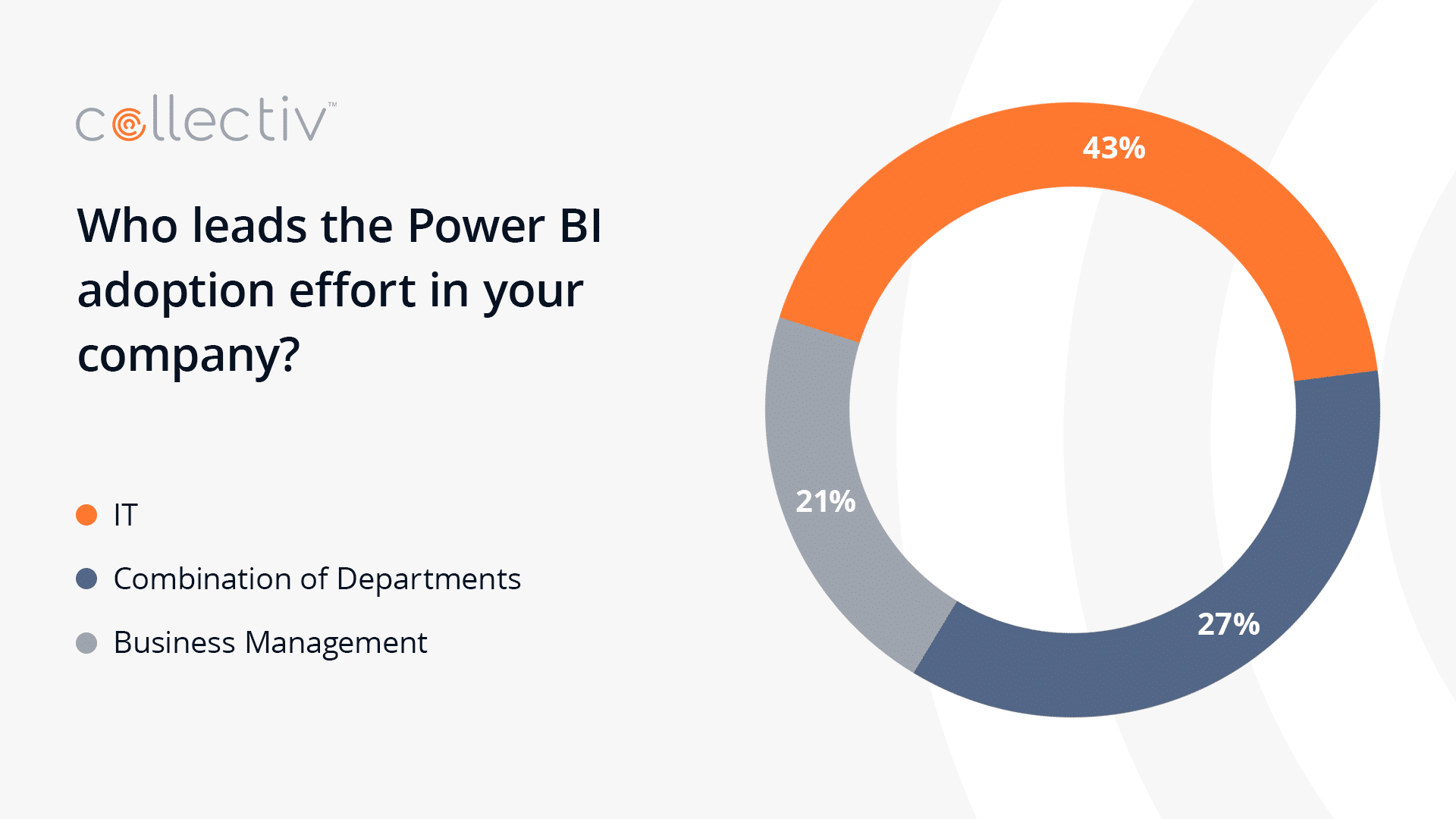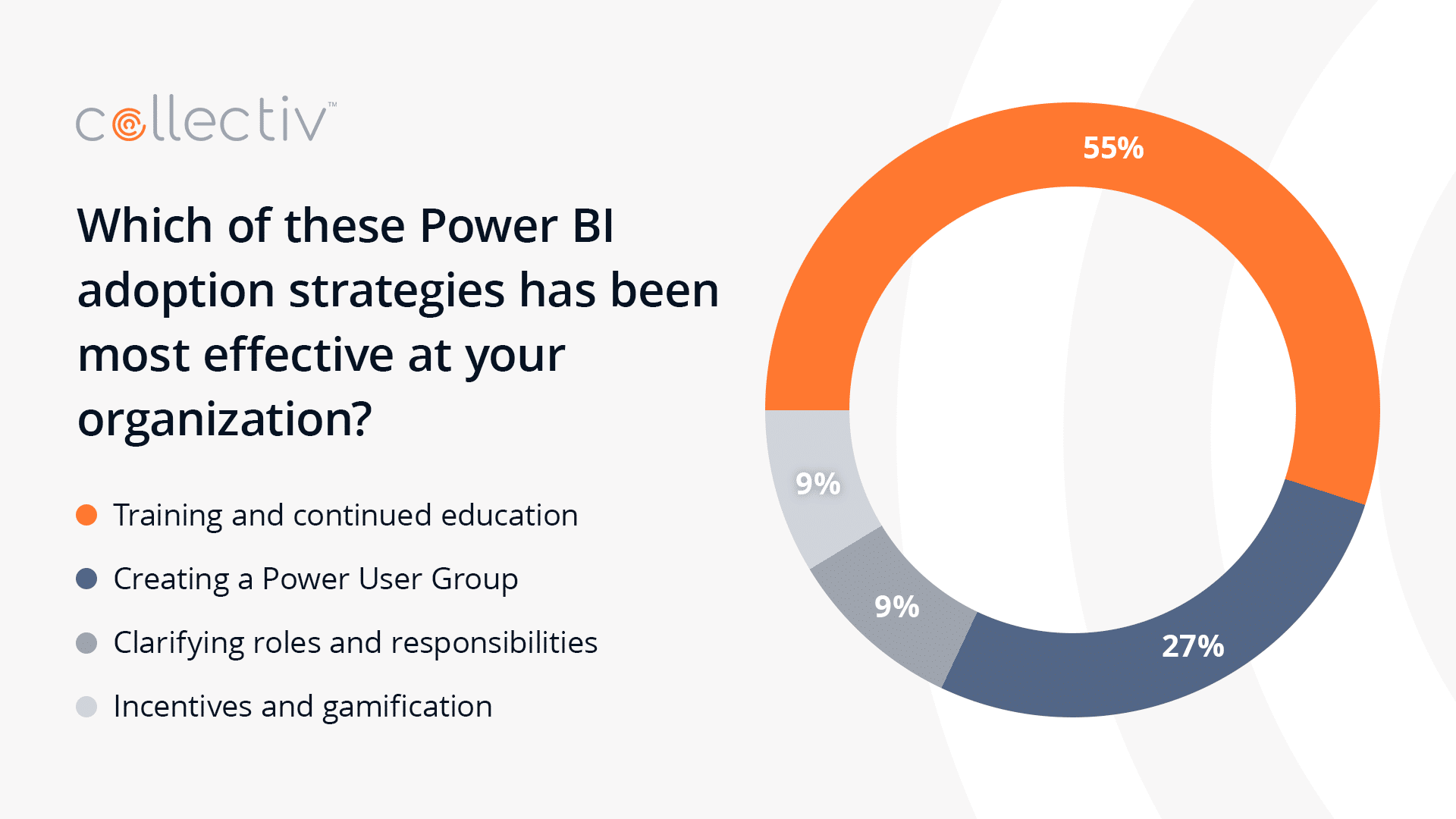Power BI is an essential tool in today’s data-driven business environment. It reduces manual and repetitive work associated with reporting and improves the quality of your data analytics. It also surfaces insights quickly to support accurate decision-making.
But Power BI won’t lay a golden egg if you just pay for the licenses and let them sit around. Like any software, you can only maximize the ROI if you get more people in the organization to use it actively. That’s why Power BI adoption is so critical for any enterprise that wants to tap into the power of data cost-effectively.
So we wonder, how are enterprises adopting Power BI in 2022?
We posted 4 polls on LinkedIn to find out:
- Which data analytics trend is a focus area for your organization in 2022?
- What is the Power BI adoption rate in your organization?
- Which is the most effective Power BI adoption strategy in your organization?
- Who leads the Power BI adoption strategy in your organization?
Here’s what we found out, plus from-the-trenches tips on how to improve your Power BI adoption rate.
58% Are Focused on Increasing Power BI Adoption
Over half of respondents say they’ll focus on Power BI adoption in 2022, compared with 13% for data modeling, 13% for data collection, and 17% for IT/business collaboration. But you can’t just say, “go use Power BI, it’s awesome,” and hope that everyone will drop everything to figure out how to do it.
Implement a Power BI adoption strategy and integrate the use of the software into the company culture. Educate end-users on the benefits of Power BI and how it supports your business objectives. Also, set up benchmarks to measure the success of the adoption process.
84% Have a Power BI Adoption Rate of Less Than 50%
Only 16% of all companies we polled have achieved a 100% Power BI adoption rate. 26% of them come in at 50%, and 58% under 25%. Most organizations have a long way to go. If you’re still trying to get your adoption effort off the ground, what’s the best way to set the stage for success?
Your Power BI adoption strategy should help you identify your goals and get everyone rowing in the same direction.
Define roles and responsibilities to clarify each stakeholder’s contribution to your Power BI initiative. These include dataset owner, dataset certifier, dataset cleaner, and initiative owner. When everybody knows their part and becomes intellectually engaged, they can measure progress against a communal goal and do what needs to be done.
43% Say That IT Leads the Power BI Adoption Effort
21% of respondents had initiatives led by business management and 36% had efforts supported by a combination of departments. IT was chosen by 43% as the Power BI adoption driver at their organization.
There are different ways to structure data and reporting ownership. These include the decentralized business-led self-service BI approach, the centralized enterprise BI model (i.e. IT owns the data and reporting), and the hybrid managed self-service BI approach.
What’s best for your organization depends on your reporting needs, data culture, user skills, flexibility required, complexity level, priorities, the ability to provide ongoing user training, and leadership commitment level.
55% Use Training and Education as Effective Strategies
Training and continued education were voted the most effective Power BI adoption strategies by a large margin by 55% of organizations.
Creating a Power User Group is a go-to adoption strategy for 27%, while only 9% of organizations felt that clarifying roles and responsibilities or incentives and gamification were effective.
You can boost Power BI adoption by using these different types of methods complementarily:
- A classroom learning environment: Provide structured group training at a dedicated time and with a specific structure.
- Hands-on training: Allow employees to work with the tools to take them from a non-user to a user.
- Continuing education program: Identify your Power BI champions and power users and empower them to create training content most relevant to your internal team.
- Self-directed learning: Motivate employees to acquire, improve, and update their Power BI skills. You can support this method with gamification and align the incentives with your data strategy’s objectives.
- Workshops: Set up multi-day sessions where users can take projects from their backlog and complete them with the appropriate guidance.
Whether you need to set the stage for success with strategy or drive adoption with best-in-class training, we’re ready to support your team. Contact our team of Power BI experts to see how we can help.








